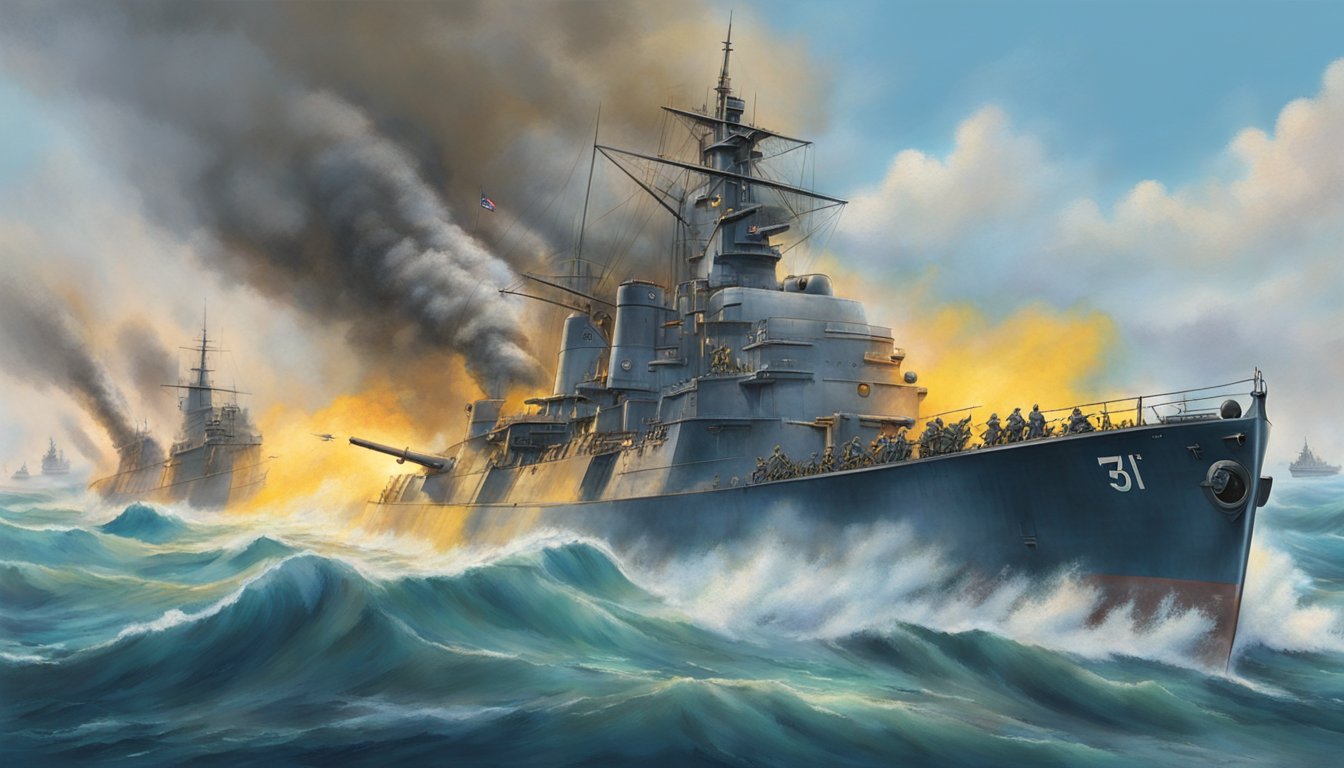The Battle of Leyte Gulf
The Battle of Leyte Gulf, which took place from October 23 to 26, 1944, is renowned as the largest naval battle in history.
During this intense conflict, the destroyer escort Samuel B. Roberts showcased extraordinary bravery that set it apart from others.
This battle, marked by four decisive skirmishes, was part of a strategy led by Japanese Admiral Soemu Toyoda, who aimed to target U.S. forces landing on Leyte.
Although the Imperial Japanese Navy was greatly weakened, their plan came closer to success than anticipated.
Samuel B. Roberts’ Gallant Stand
On October 23, the initial skirmish saw Japan’s First Strike Force suffering heavy losses in the Sibuyan Sea, with U.S. submarines Darter and Dace sinking the heavy cruisers Atago and Maya.
The following day, U.S. carrier planes from the Third Fleet delivered another blow by destroying the battleship Musashi.
By nightfall, the fighting in Surigao Strait had further decimated Japanese forces, resulting in the loss of two battleships, a cruiser, and several destroyers.
Admiral William Halsey, who commanded the U.S. Third Fleet, set his sights on engaging Japanese aircraft carriers.
However, this decision inadvertently left the landing forces at Leyte vulnerable to counterattack.
As Vice Admiral Takeo Kurita’s formidable First Strike Force approached Samar, it encountered a U.S. antisubmarine group known as “Taffy 3.” Kurita, believing Taffy 3 to be a larger fleet, decided to launch a hasty and fragmented attack.
This miscalculation granted U.S. forces, led by Rear Admiral Clifton “Ziggy” Sprague, the chance to effectively defend themselves while executing a strategic retreat, using every available aircraft and destroyer to slow the Japanese advance.
Amid this chaos, the Samuel B. Roberts, under the command of Lieutenant Commander Robert Witcher Copeland, emerged as a symbol of courage.
Even though they were outgunned, Copeland and his crew bravely launched attacks against Japanese cruisers, closing the gap to fire off torpedoes and damaging the cruiser Chokai.
Throughout the fierce battle, the Roberts unleashed a staggering 608 rounds, enduring multiple hits before ultimately facing the overwhelming power of the battleship Kongo.
Commemoration and Legacy
By 10:05 a.m., the Samuel B. Roberts succumbed to the onslaught and sank, taking down with it 89 crew members.
Among those was Gunner’s Mate Paul Henry Carr, who continued to man his gun heroically until he was gravely wounded.
The surviving crew, including Copeland, spent agonizing days stranded at sea before finally being rescued.
In the aftermath of this brutal encounter, Vice Admiral Kurita, realizing the heavy toll on his fleet, chose to withdraw from the vicinity of Samar.
The bravery of the Samuel B. Roberts did not go unnoticed.
It earned a battle star and a Presidential Unit Citation for its valiant efforts.
Carr was posthumously awarded the Silver Star for his heroism, while Copeland received the Navy Cross for his leadership.
The legacy of the Samuel B. Roberts continues to be honored, as subsequent naval vessels have been named in its memory, and its wreckage was discovered at an astonishing depth of 22,621 feet, marking it as the deepest shipwreck ever located.
Source: Militarytimes

